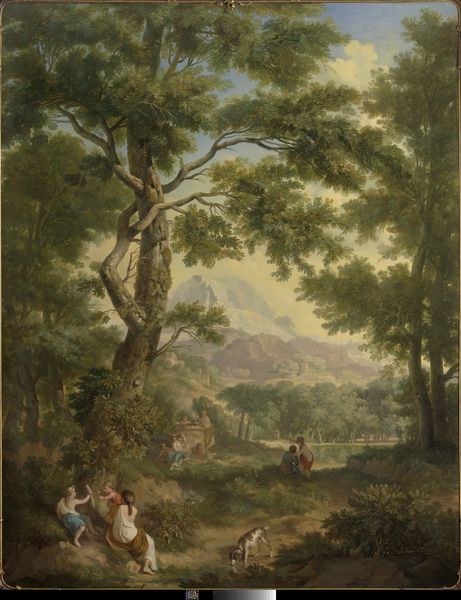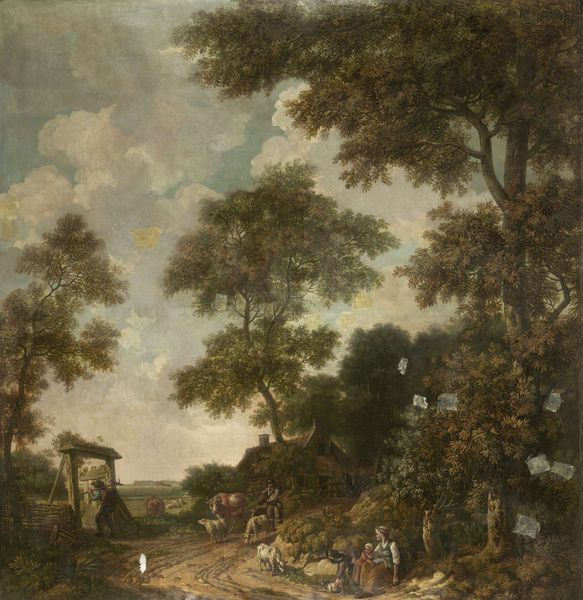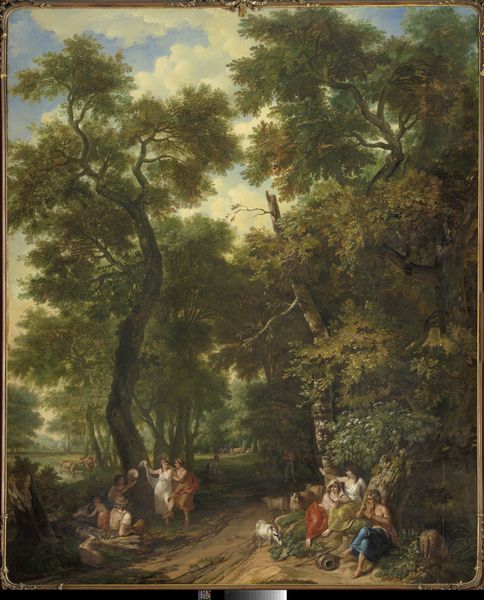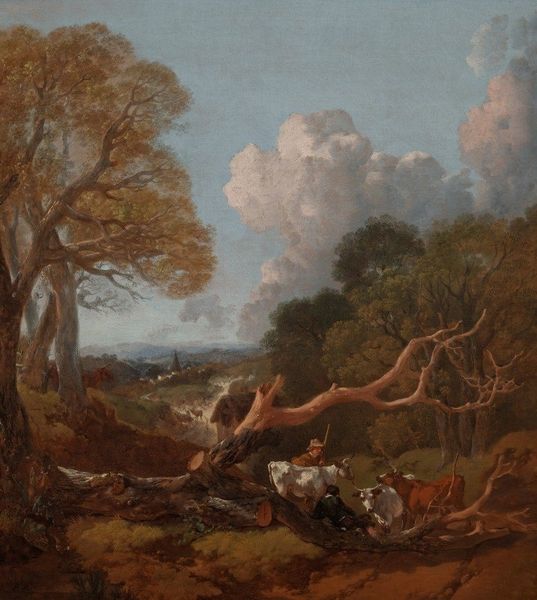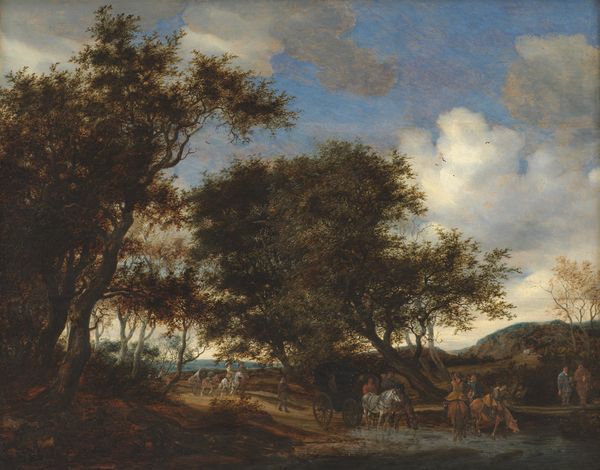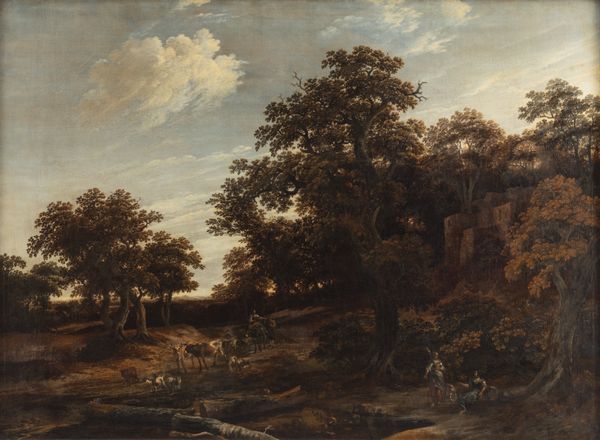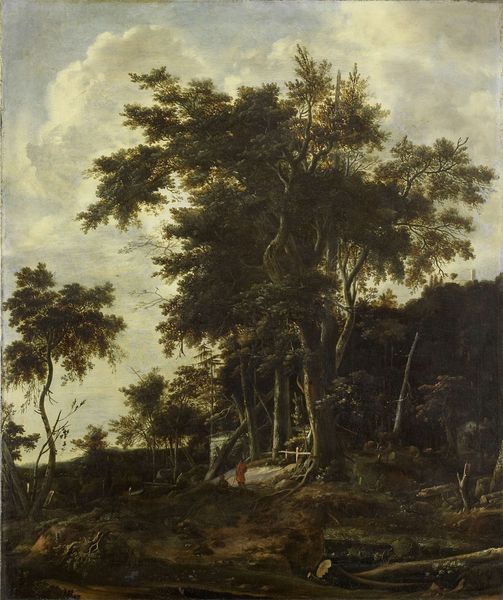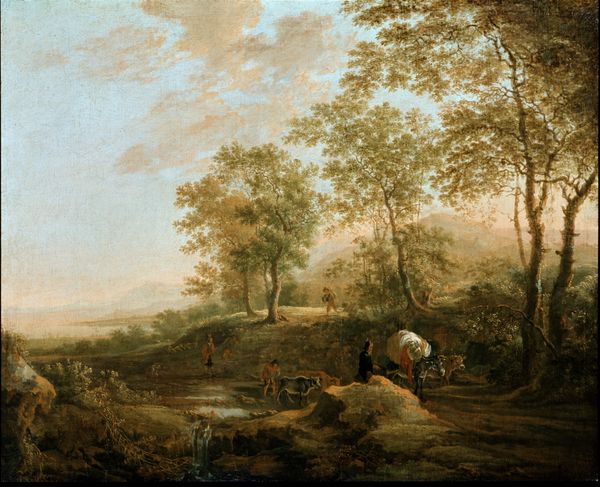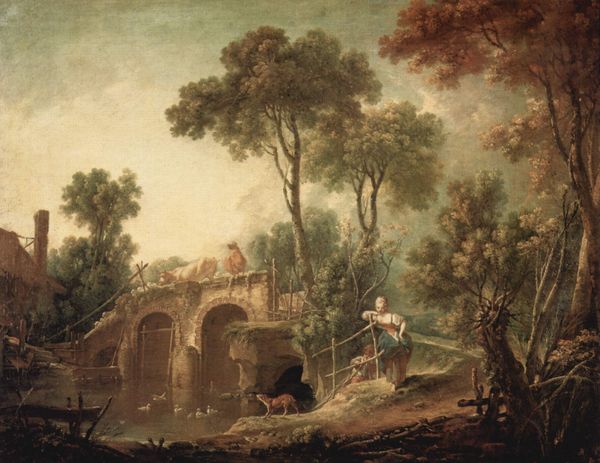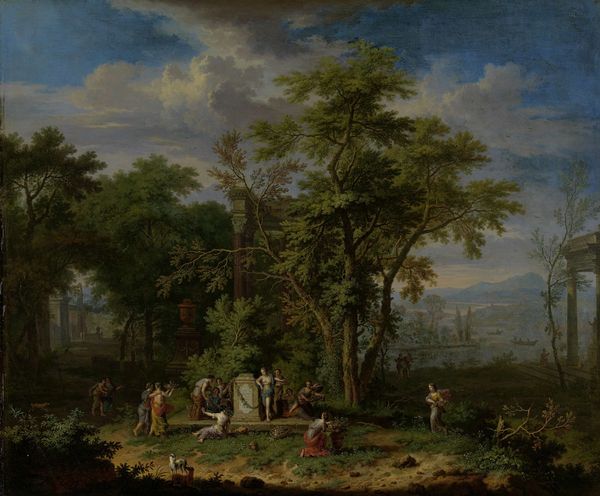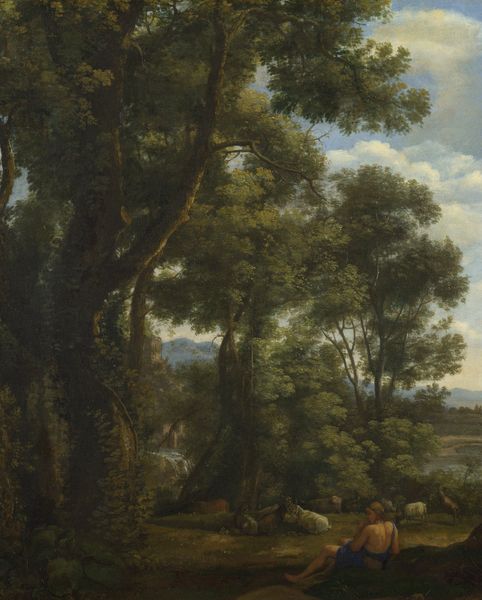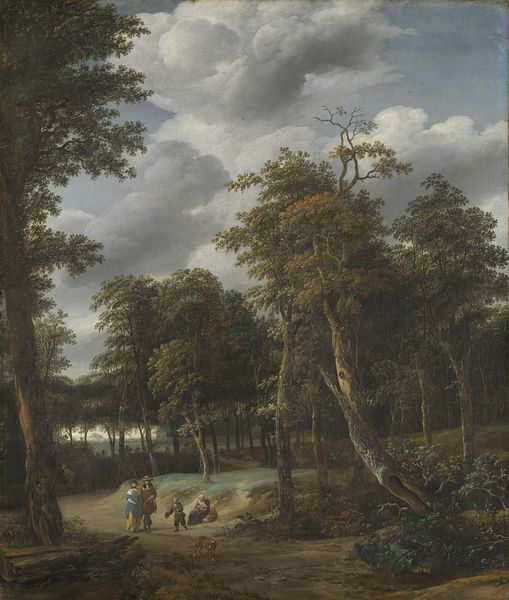
Dimensions: height 325 cm, width 263 cm
Copyright: Rijks Museum: Open Domain
Editor: We're looking at "Arcadian Landscape with Travelers" by Jurriaan Andriessen, an oil painting from 1771. It’s such an idyllic scene. It gives off this dreamlike, serene vibe. I am particularly drawn to the winding path leading our eye deeper into the landscape. What do you see in this piece, beyond the obvious beauty? Curator: Beyond beauty, I see a deliberate construction of cultural memory. Notice how the artist frames the figures within the landscape, almost as if they are acting out a pastoral play. Consider the term "Arcadia" itself. What does it evoke for you? Editor: Doesn’t Arcadia represent a sort of idealized, untouched wilderness? Curator: Precisely. Andriessen is drawing upon a long tradition of associating landscape with a golden age, a myth of simple living and harmony with nature. It's interesting to consider, isn't it, that this image was created during a time of significant social and political upheaval? The elite would often commission idealized landscapes such as these. Editor: So, you are saying the symbolism gives insight into its historic use as propaganda? Are there any visual clues that would indicate this idealization is purposeful? Curator: Note how figures are presented: classically draped, inhabiting a space that seems both natural and subtly theatrical. Also, consider the light – soft, diffused, bathing everything in a gentle glow. Does it remind you of anything in particular? Does this ‘glow’ invite an emotional response, or something else? Editor: It almost feels… staged. Everything seems too perfect, almost like a theatre backdrop. Looking at it now, it lacks authenticity. Curator: Exactly. This painting doesn't offer an objective view, but a carefully constructed representation of a world untouched by the anxieties of the era. By seeing, we remember, and remembering solidifies culture. Editor: I never thought of landscape paintings carrying so much cultural baggage. It seems a bit unsettling how they can be used to create these idealized realities, while overlooking truth. Curator: Art offers a perspective, not necessarily the truth, but how that perspective functions reveals something honest about culture.
Comments
No comments
Be the first to comment and join the conversation on the ultimate creative platform.
